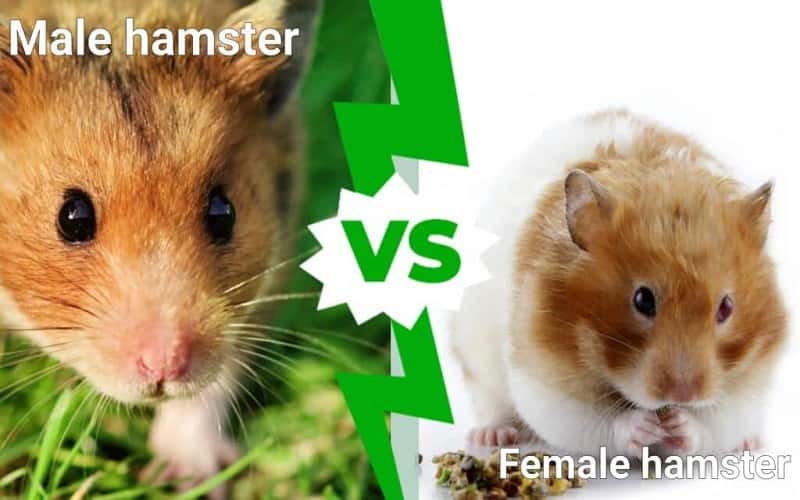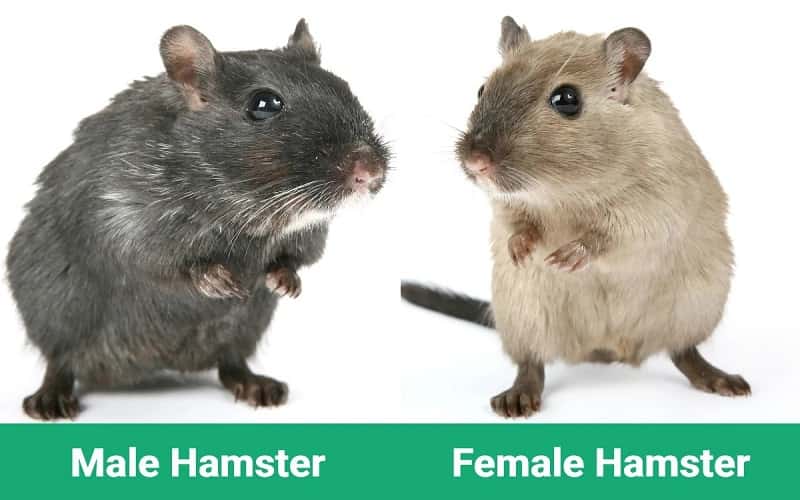If you’re considering getting a hamster, it’s important to understand the differences between male and female hamster.
This article will delve into the various aspects that distinguish male and female hamsters, including their physical characteristics, behavior patterns, reproductive variances, life expectancy, housing considerations, social interactions, size differences, care tips, feeding requirements, and suitability as pets.
Understanding Sexual Dimorphism in Hamsters
Sexual dimorphism refers to the physical differences between males and females of the same species. In the case of hamsters, there are noticeable variations that can help determine their sex. These distinctions become more apparent as they mature. It is crucial to accurately identify the gender of a hamster to ensure proper care and prevent unintended breeding.
See Also: Refer To Some Hamster Breeds
Physical differences between the two sexes of hamsters
Male and female hamsters exhibit several physical disparities. One of the most prominent differences is the location of their genital openings. In males, the anus and genital opening are farther apart, forming a visible gap.
Conversely, female hamsters have a shorter distance between these two openings, and their genital opening may appear as a small slit. Additionally, male hamsters possess testicles, which are not present in females.
Behavioral contrasts between the two sexes of Hamsters
The behavior of male and female hamsters can vary significantly. Male hamsters tend to be more territorial and aggressive compared to females. They may engage in scent marking to establish their dominance and protect their territory.
On the other hand, female hamsters are generally more sociable and cooperative. They are less likely to exhibit aggressive behavior unless they feel threatened or stressed.

Reproductive Variances in Male and Female Hamsters
One of the primary differences between male and female hamsters lies in their reproductive capabilities. Female hamsters undergo estrus cycles, during which they are fertile and can conceive. These cycles typically occur every four days.
In contrast, male hamsters do not have reproductive cycles but are sexually active throughout the year. It is crucial to separate male and female hamsters unless intentional breeding is desired.
Life Expectancy Variance Between Male and Female Hamsters
The life expectancy of male and female hamsters can differ slightly. On average, male hamsters tend to have a shorter lifespan compared to females.
This discrepancy is primarily attributed to the higher risk of health issues in males, such as testicular tumors. However, with proper care and a healthy environment, both male and female hamsters can live for two to three years or even longer.
Housing Considerations for it
When it comes to housing male and female hamsters, certain considerations should be taken into account. Since male hamsters are more territorial, providing ample space is essential to prevent aggression and stress. It is recommended to house male hamsters individually to avoid conflicts.
Female hamsters, on the other hand, are generally more sociable and can often be housed together if introduced properly.
Social Interactions of Male and Female Hamsters
Male and female hamsters have distinct social interaction patterns. Male hamsters may display aggressive behavior towards other males, especially if they perceive them as a threat to their territory or potential mates.
Female hamsters, however, are more compatible with each other and can form harmonious social groups when introduced early and given appropriate space and resources.
Size Differences Between Male and Female Hamsters
There can be notable size differences between male and female hamsters. In general, male hamsters tend to be larger and heavier than females. This disparity in size is more pronounced in some hamster species, such as the Syrian hamster. However, it’s important to note that variations in individual hamsters’ sizes can also exist within each gender.
Hamster Care Tips: Male vs. Female
While the basic care requirements for male and female hamsters are similar, there are a few considerations to keep in mind. For male hamsters, providing ample space, ensuring proper ventilation, and carefully monitoring their behavior for signs of aggression is crucial.
Female hamsters may benefit from social interaction with other females, but it’s important to be vigilant for any signs of conflict.

Feeding Requirements for Male and Female Hamsters
Male and female hamsters have similar dietary needs. A well-balanced diet for both genders includes high-quality hamster pellets as the primary food source.
Additionally, fresh vegetables, fruits, and occasional treats should be offered in moderation. It’s essential to provide clean water at all times and regularly monitor their food intake to prevent obesity and nutritional deficiencies.
Hamster Breeding: Male and Female Pairing
Breeding hamsters requires careful consideration and responsible practices. If you plan to breed hamsters, proper pairing of males and females is essential. Introduce the male and female hamsters gradually and under controlled circumstances.
Monitor their behavior closely to ensure compatibility and prevent aggression. Consult with aknowledgeable veterinarian or breeder for guidance on optimal breeding practices and the care of pregnant hamsters and their offspring.
Suitability as Pets Between Male and Female Hamsters
Both male and female hamsters can make delightful pets, but their suitability may depend on individual preferences and specific circumstances. Male hamsters may be more suitable for owners who prefer a more independent pet that requires less social interaction. Female hamsters, with their sociable nature, can be a good choice for those who want a hamster that enjoys companionship.
In conclusion, understanding the differences between male and female hamsters is crucial for providing appropriate care and maintaining their well-being. From physical characteristics and behavioral patterns to reproductive variances and housing considerations, each aspect contributes to the unique traits exhibited by male and female hamsters.
By considering these differences, you can create a nurturing environment that meets their specific needs and ensures a fulfilling and enjoyable experience as a hamster owner.
Source: https://petscaretip.com/
